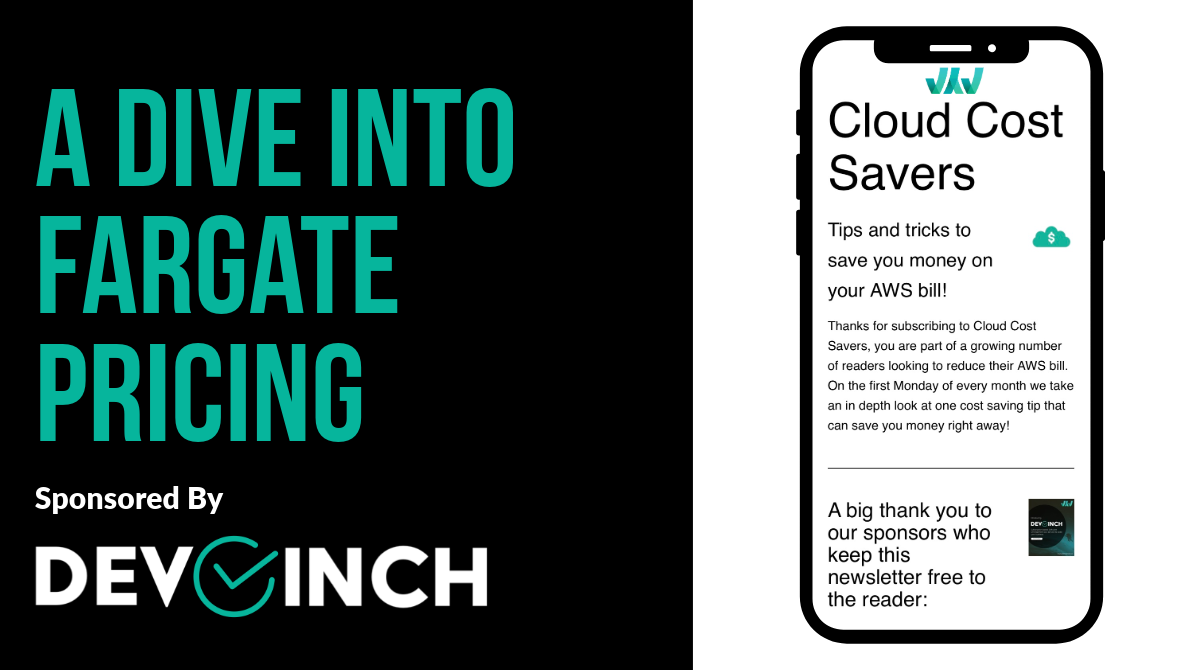Unlocking Efficiency and Savings with AWS Fargate: A Deep Dive into Pricing and Optimization
In the dynamic landscape of cloud computing, optimizing costs while ensuring scalability and performance remains a top priority for businesses. AWS Fargate, a serverless compute engine for containers, offers a compelling solution by abstracting away the underlying infrastructure management, allowing developers to focus solely on their applications. However, understanding Fargate's pricing model and implementing optimization strategies are crucial for maximizing efficiency and minimizing costs.
Understanding Fargate Pricing
AWS Fargate pricing is based on several factors, including vCPU (virtual CPU) and memory resources allocated to the containers, as well as the duration of their execution. Let's break down the key components:
vCPU and Memory Allocation
Fargate offers various combinations of vCPU and memory resources, allowing users to select the most suitable configuration for their applications. Pricing varies based on the chosen combination, with higher resource allocations incurring higher costs.
Task Duration
Fargate charges users based on the duration their containers are running, rounded up to the nearest second. It's essential to optimize task execution time to minimize costs, as longer-running tasks result in higher charges.
Data Transfer
Additional costs may apply for data transfer between Fargate tasks and other AWS services or the internet. Understanding and managing data transfer efficiently can help prevent unexpected charges.
Regional Pricing Differences
AWS Fargate pricing may vary slightly between AWS regions, so users should consider deploying their containers in regions with lower costs, if feasible.
Optimization Strategies for Cost Efficiency
While Fargate simplifies container management, implementing optimization strategies can further enhance cost efficiency:
Right-Sizing Resources
Analyze your application's resource requirements and choose the appropriate combination of vCPU and memory to avoid over-provisioning. AWS offers tools like AWS CloudWatch and AWS Trusted Advisor for monitoring and optimizing resource utilization.
Task Scheduling
Utilize Fargate's flexibility to schedule tasks during off-peak hours or periods of low demand to take advantage of lower pricing. Leveraging AWS Lambda or Amazon ECS Task Scheduler can automate task scheduling based on predefined criteria.
Task Consolidation
Instead of running multiple small tasks, consider consolidating them into fewer, larger tasks to reduce overhead and minimize the number of billable execution units.
Spot Instances
For non-mission-critical workloads, consider using Fargate Spot instances, which offer significant cost savings compared to standard Fargate tasks. However, be prepared for potential interruptions as Spot instances are subject to availability fluctuations.
Data Transfer Optimization
Minimize data transfer costs by optimizing network traffic within your application architecture. Utilize AWS Direct Connect or AWS VPN for predictable and cost-effective data transfer between on-premises environments and AWS.
Reserved Capacity
If your workload has predictable resource requirements, consider purchasing Reserved Capacity for Fargate, which provides cost savings compared to on-demand pricing.
Conclusion
AWS Fargate offers a powerful platform for running containerized applications without the need for managing underlying infrastructure. By understanding Fargate's pricing model and implementing optimization strategies, businesses can unlock significant cost savings while ensuring scalability, reliability, and performance for their applications. Continuously monitoring and refining these strategies will enable organizations to adapt to evolving requirements and maximize the value derived from AWS Fargate.
In the ever-evolving landscape of cloud computing, staying informed and proactive is key to optimizing costs and maintaining a competitive edge. With AWS Fargate, businesses have a versatile tool at their disposal to achieve their goals efficiently and cost-effectively.
Interested in more?
To get notified of new articles like this and keep on top of your cloud costs, join our growing community and subscribe to the newsletter.
